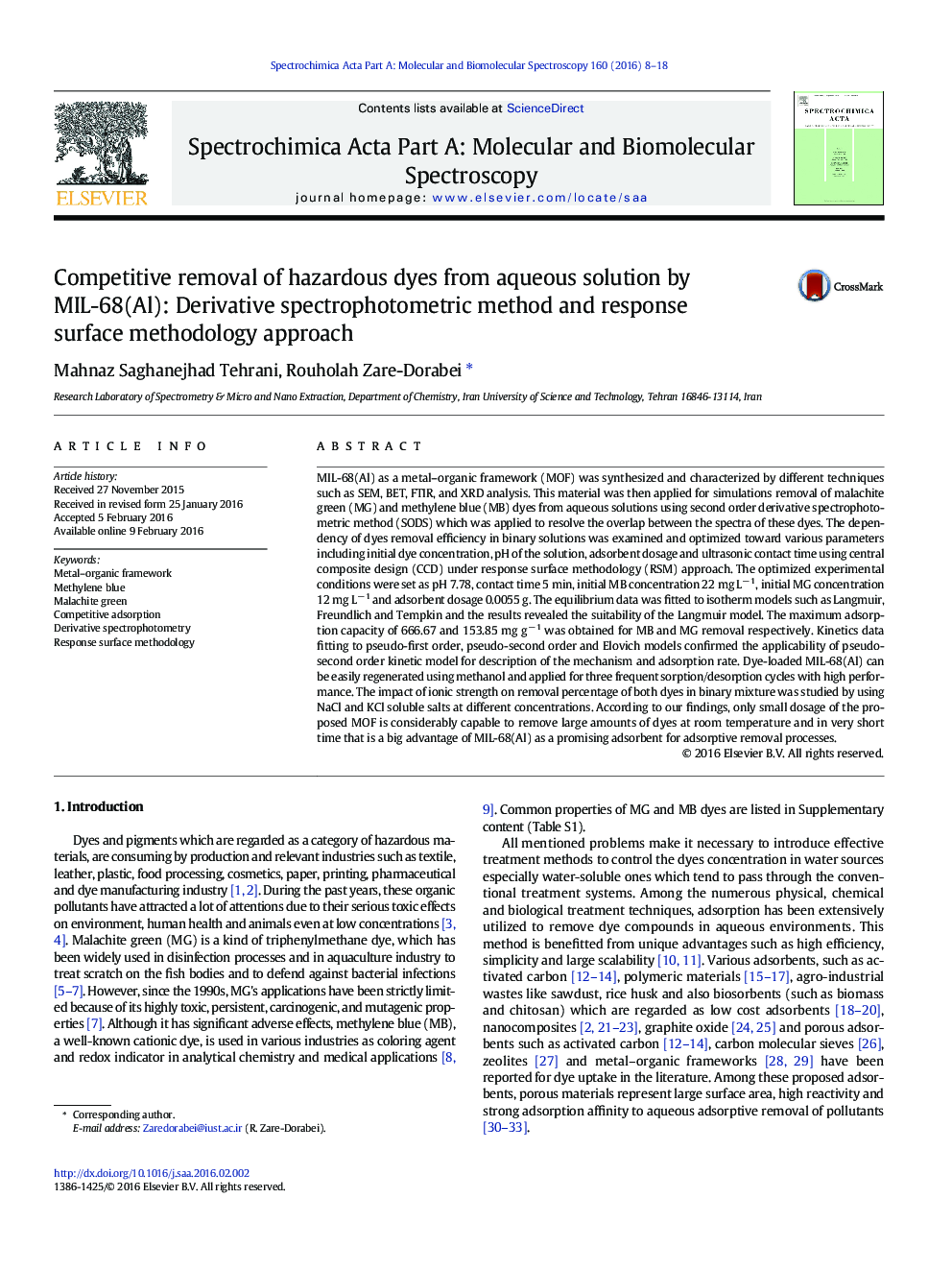| کد مقاله | کد نشریه | سال انتشار | مقاله انگلیسی | نسخه تمام متن |
|---|---|---|---|---|
| 1231382 | 1495209 | 2016 | 11 صفحه PDF | دانلود رایگان |

• MIL-68(Al) was applied for simultaneous dye removal in binary solutions.
• Experimental design was used to analyze the interaction between variables and to achieve the optimal conditions.
• The adsorption process was evaluated by different kinetics and isotherm models.
• Dye-loaded MIL-68(Al) can be easily regenerated and applied for several sorption/desorption cycles with high performance.
MIL-68(Al) as a metal–organic framework (MOF) was synthesized and characterized by different techniques such as SEM, BET, FTIR, and XRD analysis. This material was then applied for simulations removal of malachite green (MG) and methylene blue (MB) dyes from aqueous solutions using second order derivative spectrophotometric method (SODS) which was applied to resolve the overlap between the spectra of these dyes. The dependency of dyes removal efficiency in binary solutions was examined and optimized toward various parameters including initial dye concentration, pH of the solution, adsorbent dosage and ultrasonic contact time using central composite design (CCD) under response surface methodology (RSM) approach. The optimized experimental conditions were set as pH 7.78, contact time 5 min, initial MB concentration 22 mg L− 1, initial MG concentration 12 mg L− 1 and adsorbent dosage 0.0055 g. The equilibrium data was fitted to isotherm models such as Langmuir, Freundlich and Tempkin and the results revealed the suitability of the Langmuir model. The maximum adsorption capacity of 666.67 and 153.85 mg g− 1 was obtained for MB and MG removal respectively. Kinetics data fitting to pseudo-first order, pseudo-second order and Elovich models confirmed the applicability of pseudo-second order kinetic model for description of the mechanism and adsorption rate. Dye-loaded MIL-68(Al) can be easily regenerated using methanol and applied for three frequent sorption/desorption cycles with high performance. The impact of ionic strength on removal percentage of both dyes in binary mixture was studied by using NaCl and KCl soluble salts at different concentrations. According to our findings, only small dosage of the proposed MOF is considerably capable to remove large amounts of dyes at room temperature and in very short time that is a big advantage of MIL-68(Al) as a promising adsorbent for adsorptive removal processes.
Figure optionsDownload as PowerPoint slide
Journal: Spectrochimica Acta Part A: Molecular and Biomolecular Spectroscopy - Volume 160, 5 May 2016, Pages 8–18